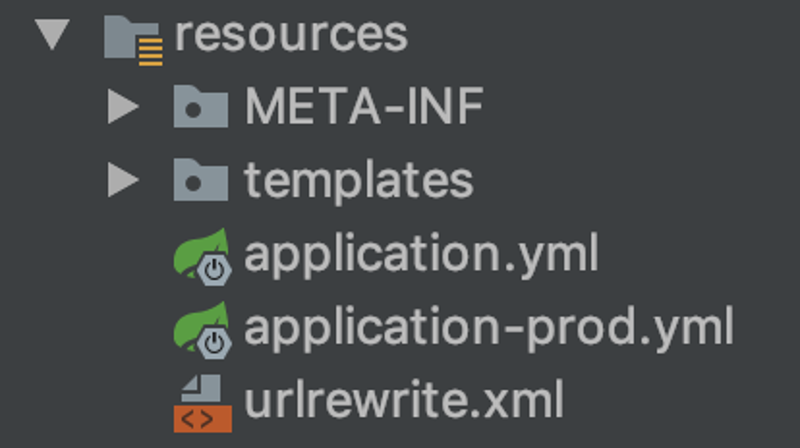1. 背景
伪静态就是指动态网页通过重写URL的方法,实现去掉动态网页的参数,使之伪装成例如xxx.htm后缀结尾的纯静态路径,能够很好的让搜索引擎爬取程序识别(俗称:蜘蛛Spider),但是原有的动态路径还是可以照常访问。
1、伪静态能够很好让搜索引擎爬取程序索引并收录。而动态路径则由于参数过多而有可能被丢弃。
2、能够很好的促进站点内部的权重传递(原因还是动态路径不被搜索引擎看好,虽然搜索引擎目前已经有所改进,但相对来说依然不是那么友好,如果丢弃那么就不予计算权重。)
伪静态路径总的来说,是非常有利于搜索引擎爬取和收录的。所以这个办法就很好的解决了,由于搜索引擎目前对动态路径不友好,动态路径索引困难的问题。
2. 解决方案
springboot中配置urlrewrite实现url伪静态强化网站seo
3. 详细方案
3.1 关于urlrewrite
urlrewrite使用强大的自定义规则来使用用户更容易记住、搜索引擎更容易找到的URL(对于seo比较重要)。通过使用规则模板、重写映射,Web管理员可以轻松地设置规则,根据HTTP标头、HTTP响应或请求标头、变量,甚至复杂的编程规则来定义URL重写行为。此外,Web管理员可以根据重写规则中表示的逻辑进行url重定向、发送自定义响应或停止HTTP请求。
3.2 编码实现
1.引入maven依赖:
<dependency>
<groupId>org.tuckey</groupId>
<artifactId>urlrewritefilter</artifactId>
<version>4.0.4</version>
</dependency>
2.重写UrlRewriteFilter的过滤器加载urlrewrite.xml规则,urlrewrite.xml放在 resources文件夹下

package webapp.conf;
import org.springframework.beans.factory.annotation.Value;
import org.springframework.context.annotation.Configuration;
import org.springframework.core.io.Resource;
import org.tuckey.web.filters.urlrewrite.Conf;
import org.tuckey.web.filters.urlrewrite.UrlRewriteFilter;
import javax.servlet.FilterConfig;
import javax.servlet.ServletException;
import java.io.IOException;
@Configuration
public class UrlRewriteConf extends UrlRewriteFilter {
private static final String URL_REWRITE = "classpath:/urlrewrite.xml";
//注入urlrewrite配置文件
@Value(URL_REWRITE)
private Resource resource;
//重写配置文件加载方式
protected void loadUrlRewriter(FilterConfig filterConfig) throws ServletException {
try {
//将Resource对象转换成Conf对象
Conf conf = new Conf(filterConfig.getServletContext(), resource.getInputStream(), resource.getFilename(), "@@traceability@@");
checkConf(conf);
} catch (IOException ex) {
throw new ServletException("Unable to load URL rewrite configuration file from " + URL_REWRITE, ex);
}
}
}3.urlrewrite.xml文件配置,urlrewrite.xml规则示例:
<?xml version="1.0" encoding="utf-8"?>
<!DOCTYPE urlrewrite PUBLIC "-//tuckey.org//DTD UrlRewrite 3.2//EN"
"http://tuckey.org/res/dtds/urlrewrite3.2.dtd">
<urlrewrite>
<rule>
<name>seo redirect 301</name>
<condition name="host">^9191boke.com$</condition>
<from>^/(.*)</from>
<to type="permanent-redirect" last="true">http://www.9191boke.com/$1</to>
</rule>
<rule>
<name>seo redirect 301</name>
<condition name="host">^localhost:9191$</condition>
<from>^/(.*)</from>
<to type="permanent-redirect" last="true">http://www.localhost:9191/$1</to>
</rule>
<rule>
<from>^/([0-9]+).html$</from>
<to>/blogdetails/$1.html</to>
</rule>
<rule>
<from>^/p_([0-9]+).html$</from>
<to>/?page=$1</to>
</rule>
</urlrewrite>from标签内的表示匹配的模式,<to>标签内的是想要转换的模式。
<rule>
<name>seo redirect 301</name>
<condition name="host">^9191boke.com$</condition>
<from>^/(.*)</from>
<to type="permanent-redirect" last="true">http://www.9191boke.com/$1</to>
</rule>
以上为域名301重定向,所有http(s)://9191boke.com/xxx链接会重定向至http://www.9191boke.com/xxx
<from>^/([0-9]+).html$</from>
<to>/blogdetails/$1.html</to>
^/([0-9]+).html$表示http://xxx/数字.html会发送实际请求为http://xxx/blogdetails/数字.html
<rule>
<from>^/p_([0-9]+).html$</from>
<to>/?page=$1</to>
</rule>
^/p_([0-9]+).html$表示http://xxx/p_数字.html会发送实际请求为http://xxx/?page=数字.html
每一条拦截规则使用rule标签包裹。
这里没有特别需要注意的地方,如果只是简单的使用的话,记住下面这一点就足够了。
如果你会用正则表达式的话,可以通过正则表达式来处理(推荐使用),如果不会,可以使用通配符。
注意:本文归作者所有,未经作者允许,不得转载


